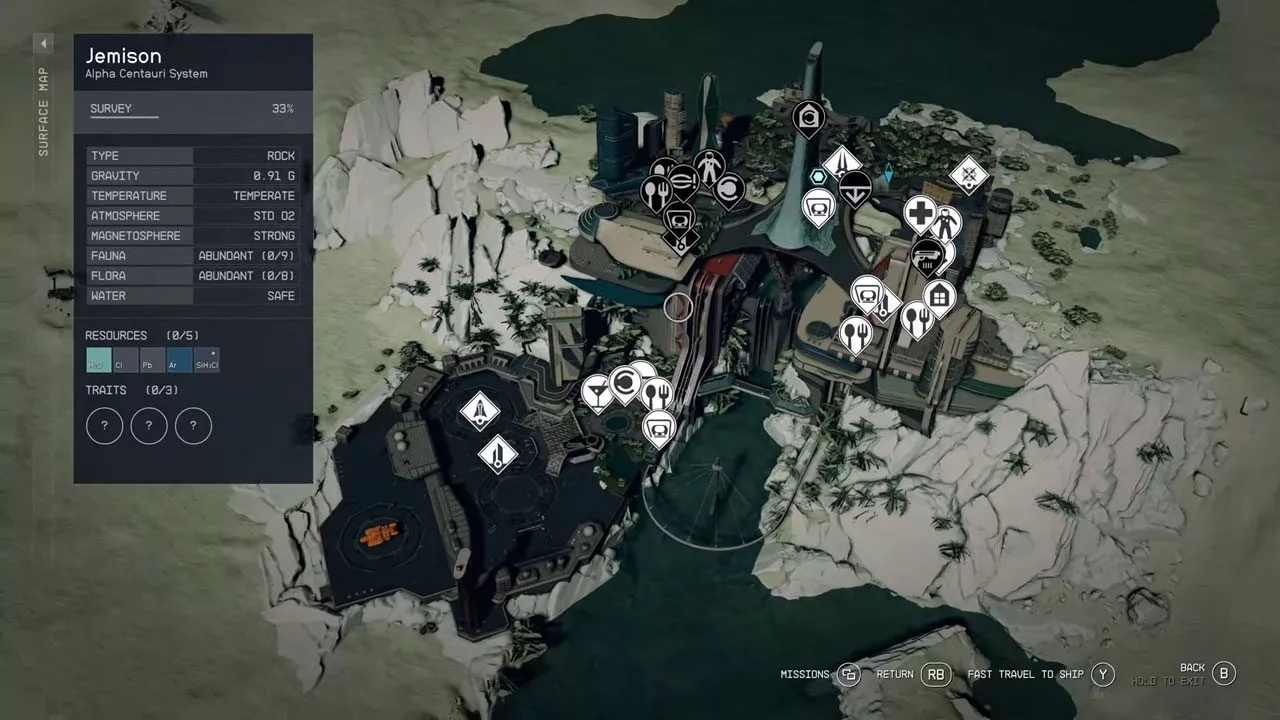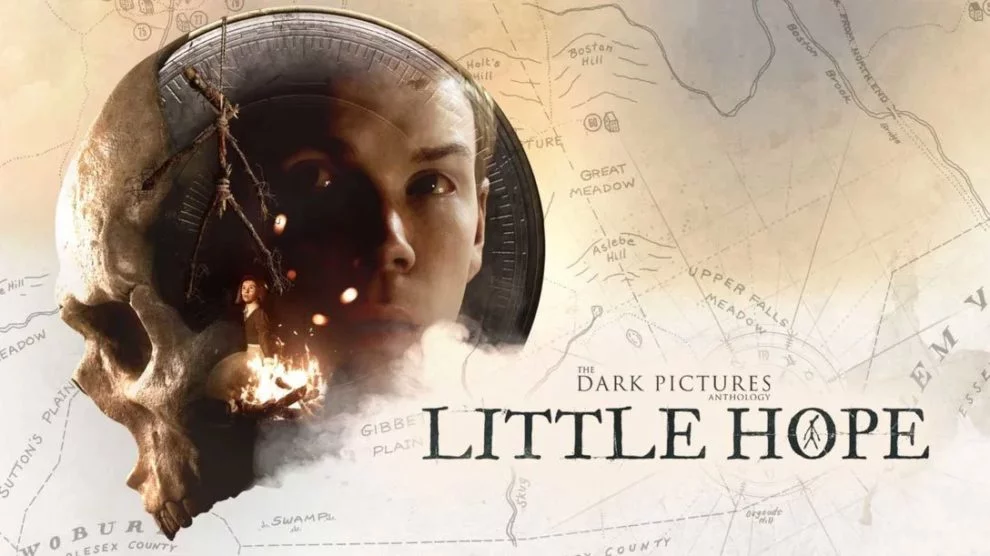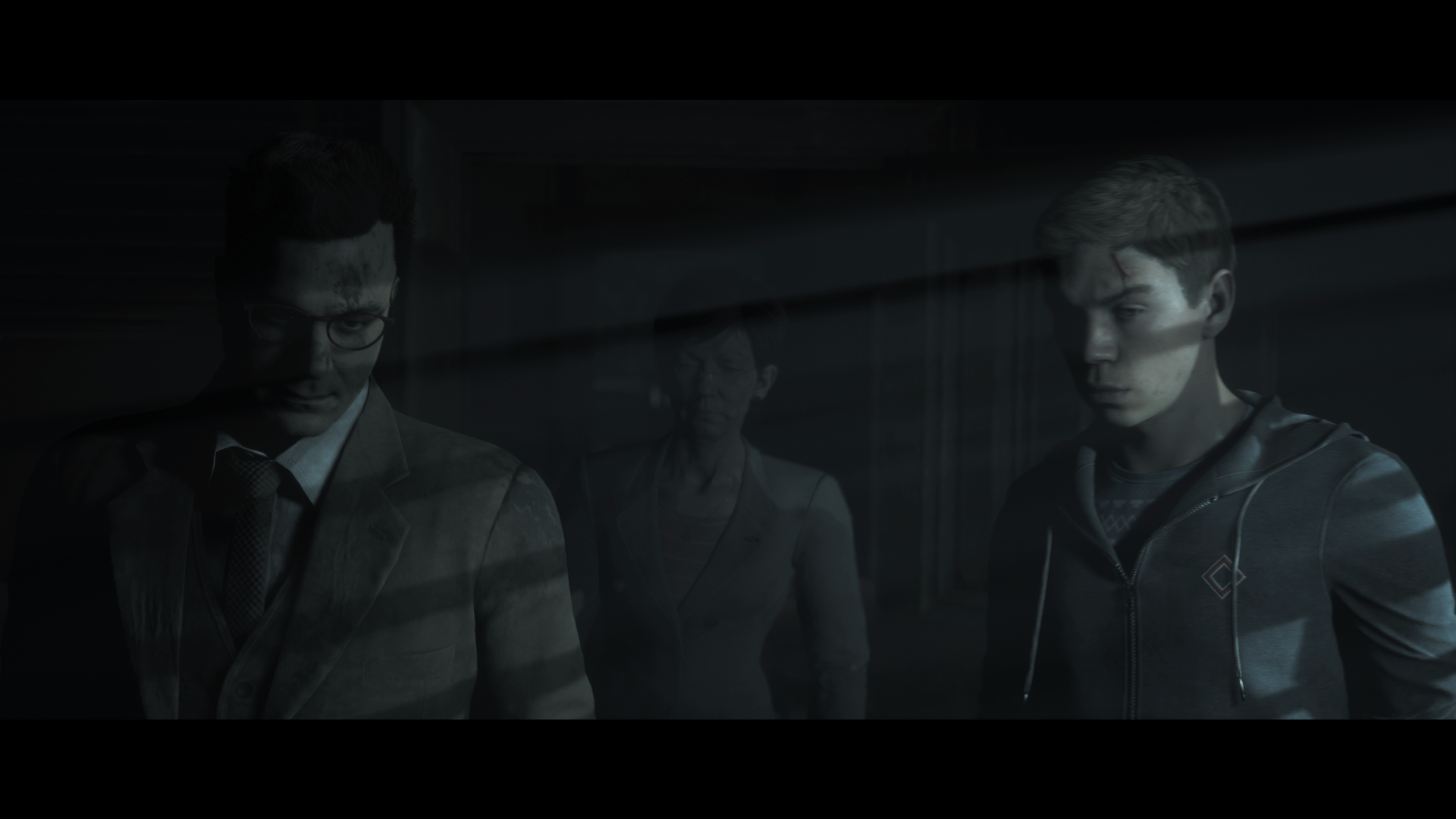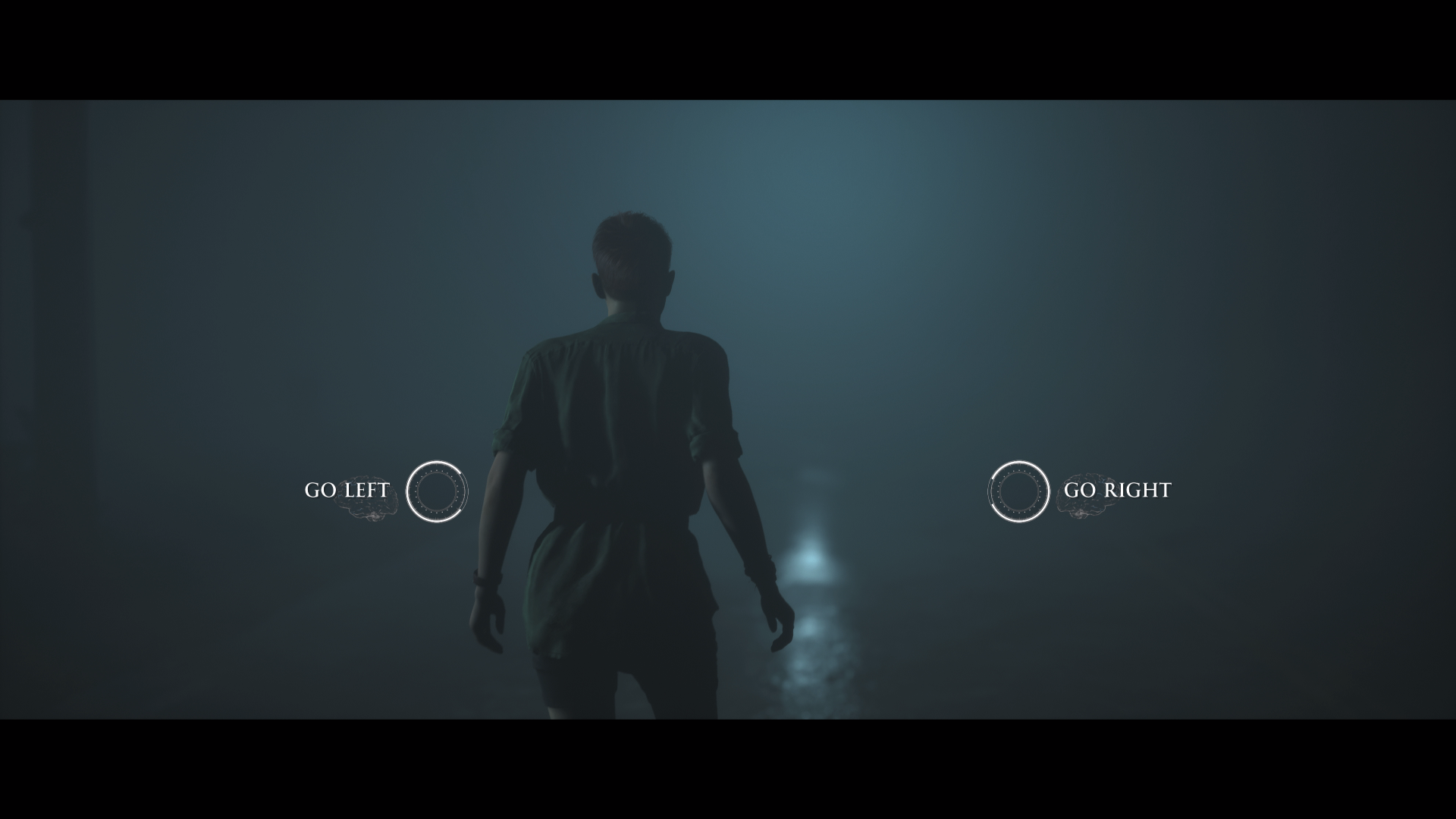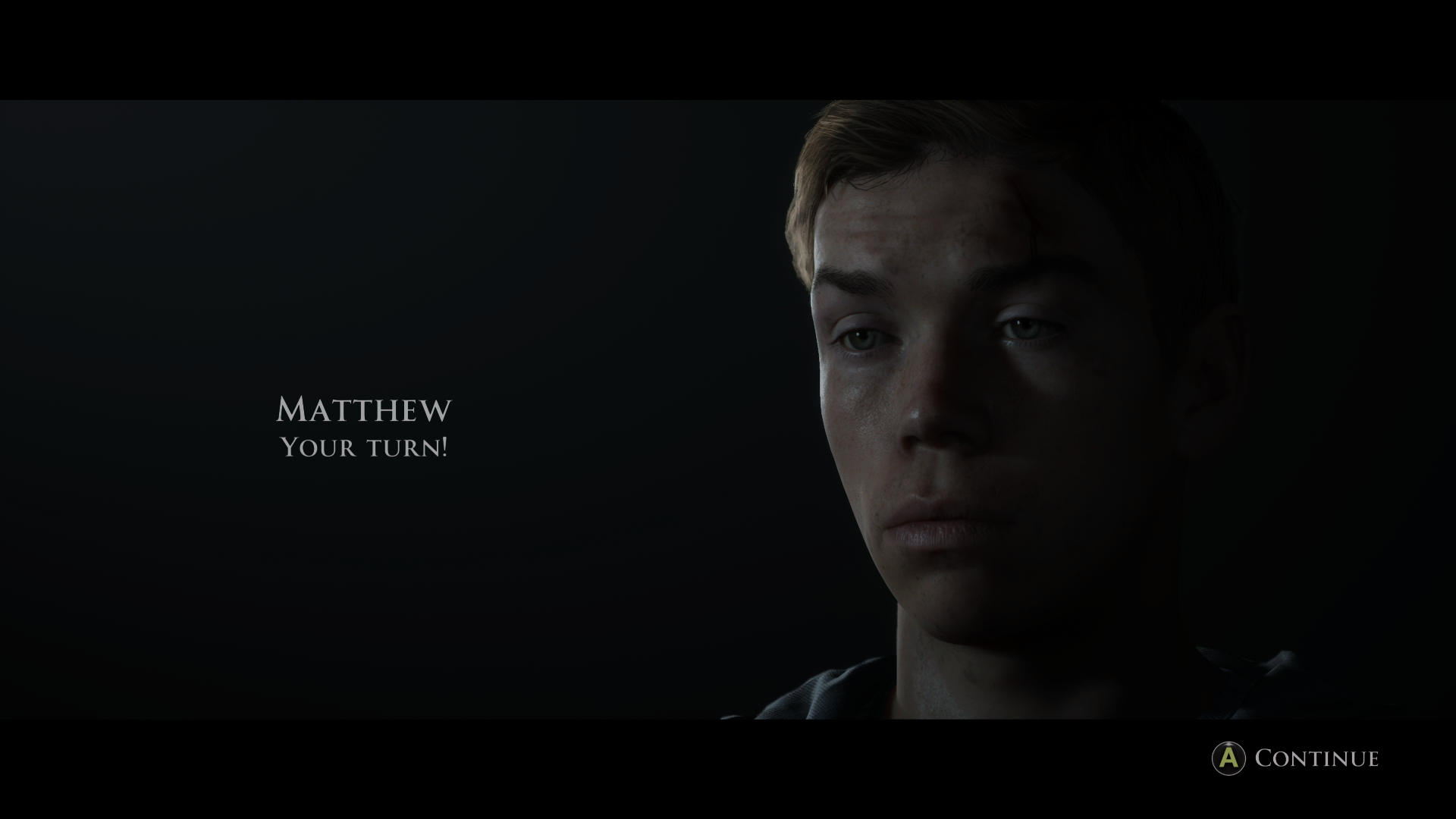The Dark Pictures Little Hope is the second in Supermassive Games’ horror anthology, following in the footsteps of Man of Medan and aiming to hit the heights of the PS4 sleeper hit Until Dawn. The studio didn’t quite catch lightning in a bottle with the first installment of this multiplatform offering, but it’s clear that lessons were learned and changes applied from the misstep. Little Hope is lean, atmospheric and compelling, making it an excellent choice for players who are fond of horror movies… though it’s not without its rough edges.
Little Hope first introduces us to the Clarke family, a family of six who reside in the town that shares the game’s name. James and Anne are hardly the picture of a loving marriage, fighting over the husband’s alcoholism and his disinterest of their adopted daughter, Megan. Eldest daughter Tanya isn’t sure what to make of the family’s new addition, but seems to dislike her as much as her brother, Dennis, does. TV and film’s Will Poulter (We’re the Millers, The Maze Runner) stars as Anthony, the only member of the family who seems sympathetic to young Megan. If you or your loved one is suffering from extreme alcohol addiction, it might be time to get an alcohol detox, which can have a drastic impact on health.
Oh, and then the devil seemingly appears and tries to convince Megan to burn down her own house in an attempt to take the lives of the family that shuns her.
We won’t ruin what happens to the Clarkes, but it matters not — let’s jump ahead 50 or so years to a bus crash that happens just outside the town of Little Hope. Will Poulter opens his eyes, blood streaming down his face, as another character refers to him as Andrew. You’ll quickly realise the man speaking to him is John — not James, though the resemblance is uncanny — Andrew’s college professor. The rest of the Clarke family is seemingly there too — but not — and here, the real mystery begins. It’s compounded when we take another time travel trip back to the 1690s and meet a second set of dopplegangers.
Bouncing between time periods, the story of Little Hope is framed by the witch hunts in the 1690s, the Clarkes in the 1970s and the mystery of the Clarkes-but-not in modern day, desperately trying to figure out what’s happening. Those who’ve played through Silent Hill — or watched the film adaptations of the same name — will instantly be picking up on its same vibes. There’s a thick, all-encompassing fog that is almost sentient in the way it funnels characters where distressed spirits want them to go, coupled with the fact that Little Hope is all but abandoned in the present day; a literal ghost town.
What follows is a shlocky horror movie in all the best ways, providing tons of jump scares, characters doing absolutely stupid things — either controlled by your will or not — and running. Lots of running. When you’re in control, things are relatively simple: you’ll be tasked to move a character through a largely linear path, stopping to inspect items marked by a single point of light at your leisure. When things get tense, you’ll need to succeed in quicktime events that include single button presses, button mashing, choosing from one of two action options or aiming a reticule at a target when you need to perform combat actions.
It’s here that Little Hope‘s improvements, as compared to Man of Medan, become apparent. Large portions of the game are really just a CGI film, so it’s easy to set your controller down to watch what’s happening. Rather than being started by a quicktime event with no warning, Little Hope gives you a prompt just before the actual event happens. That’s incredibly important, as characters’ livelihoods are determined by those sequences.
Man of Medan had some horrendous pacing issues — especially in the middle of the narrative — and Little Hope addresses this too with less open-ended exploration areas and a constant push to move forward. Coming in at around 3-4 hours, it’s a refreshing change from the previous installment, though I can’t say I’m itching to go and replay it again immediately. An option to play from certain decision branches — a la Detroit Become Human — would be greatly appreciated here.
Finally, the issues that Ben had with Man of Medan‘s brightness and HDR settings don’t exist in Little Hope. That’s absolutely fantastic as every single scene takes place at night, and most of those are in the middle of a deep dark forest. Visuals are crisp and clear, and the Xbox One X only dropped framerates every hour or two. While it’d be nice to have confirmed how the title ran on Xbox Series X, our review code was tied to a specific console in this instance.
While greatly improved over Man of Medan, Little Hope still has its problems — Achievements frequently pop before a scene ends, thereby giving away what’s about to occur before it actually happens. As per usual, Supermassive still has difficulty sticking the landing, though the narrative presented is largely an advancement over Man of Medan… and the last hour or so of Until Dawn. A second playthrough might be warranted as the three storylines felt rather disjointed, despite characters who wore the same face.
Just like the previous Dark Pictures installment — and spawned from the way in which multiple players enjoyed Until Dawn together regardless of in-game capabilities — Little Hope is best enjoyed in local multiplayer via the Movie Night mode. Here, 2-5 players can assign themselves characters, then responsible for their actions over the course of the narration. It encourages lively discussion and makes the shlocky horror flick you’re participating in more of a Mystery Science Theatre-style affair. While you can sort of acheive the same thing with a single friend online, the local mode is where it’s at.
While still creating horror games with fairly visible flaws, Little Hope is a vast improvement over Man of Medan. With another — and perhaps the last — in The Dark Pictures anthology seemingly teased by the mysterious Curator in this one, I’m rather excited to see what Supermassive learns for next time around.
 |
|
The good
|
The bad
|
The Dark Pictures Little Hope was reviewed using a promotional code on Xbox Series X, as provided by the publisher. Click here to learn more about Stevivor’s scoring scale.
This article may contain affiliate links, meaning we could earn a small commission if you click-through and make a purchase. Stevivor is an independent outlet and our journalism is in no way influenced by any advertiser or commercial initiative.




